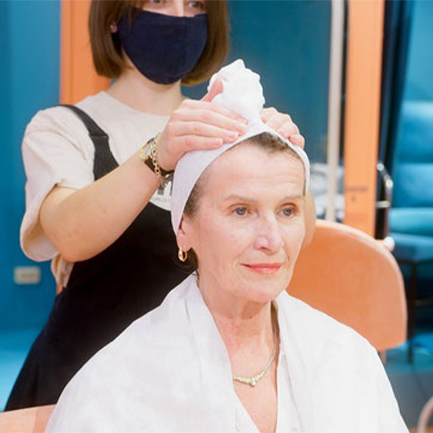Seborrheic Dermatitis and Dandruff
Seborrheic dermatitis is a chronic inflammatory condition that affects areas of the skin with increased oil production such as the scalp, eyebrows, sides of the nose, beard areas, ears, and chest. Dandruff refers to seborrheic dermatitis affecting the scalp.
What causes Seborrheic Dermatitis and Dandruff?
Seborrheic Dermatitis is an inflammatory reaction to the normal yeast, Malassezia, that lives on our skin. This is a rash that is pink and scaly/flaky and typically present over the eyebrows, near the nose, in the beard area, etc. Dandruff (scalp flaking) can be caused by a number of things – dryness of the scalp, over oiliness of the scalp, allergic reactions to hair care products, seborrheic dermatitis, and Malasezia overgrowth.

Is it contagious?
No, Dandruff and Seborrheic Dermatitis are not contagious.
How do we treat Dandruff?
Treatment depends on the patient, symptoms, and potential cause of dandruff. For patients with dry skin or over-shampooing and dry scalp we recommend trying a gentle or moisturizing shampoo like – Head and shoulders Soothe and Strengthen with argan oil. You can moisturize with Head and Shoulders Royal Oils Instant Soothe Scalp Elixir. Teatree oils and peppermint oils are also favorites of Dr. Contestable. However, even though many recommend olive oil, Dr. Contestable asks patients to stay away from this ingredient as olive oil is sometimes used in the lab to help Malassezia grow.
If you have significant itch, talk to your dermatologist – you may have an allergy to a component of your shampoo or other haircare product. However, tar-based shampoos are also very helpful for itch relief as well as moisturizing.
How do we treat Seborrheic Dermatitis?
Treatments are aimed at decreasing the inflammatory reaction to the yeast and/or decreasing the amount of yeast on the skin. Topical agents include low potency steroid solutions/creams (such as hydrocortisone) and anti-fungal shampoos and creams. In difficult to control cases, anti-fungal tablets may be prescribed by Dr. Contestable – however, continued use of topical anti-fungals are absolutely required with this approach.
Can I treat my Seborrheic Dermatitis or Dandruff on my own?
Yes! And we recommend that as a first step. Dr. Contestable recommends you use anti-yeast shampoos over the scalp, face, chest, etc. (wherever the issue exists). If targeting yeast, Dr. Contestable likes to “confuse” the yeast by having patients use different active ingredients on different days. For instance – a Zinc Pyrithione-based shampoo on one day and then a Ketoconazole or Selenium Sulfide-based shampoo on the next day. One important aspect is to let the shampoo “sit” for about 5 minutes before rinsing. Consider this a “treatment” and not a “shampoo”.
For seborrheic dermatitis of the face, hydrocortisone cream or clotrimazole cream are both over-the-counter and can be applied to scaly, red areas.

It is important to understand that the anti-fungal is the preventative treatment and the steroid is used for “rescue treatment” usually only a couple times a week at most. Oftentimes, prescription strength treatments are required, so if you are failing to respond to these over-the-counter suggestions, consider scheduling an appointment with Dr. Contestable for further evaluation.
Source: American Academy of Dermatology (link – https://www.aad.org/public/diseases/a-z/seborrheic-dermatitis-overview) and (link - https://www.aad.org/public/everyday-care/hair-scalp-care/scalp/treat-dandruff)
For Physicians only (or patients of Dr. Contestable) – “Seborrheic Dermatitis and Dandruff – Patient Handout”

